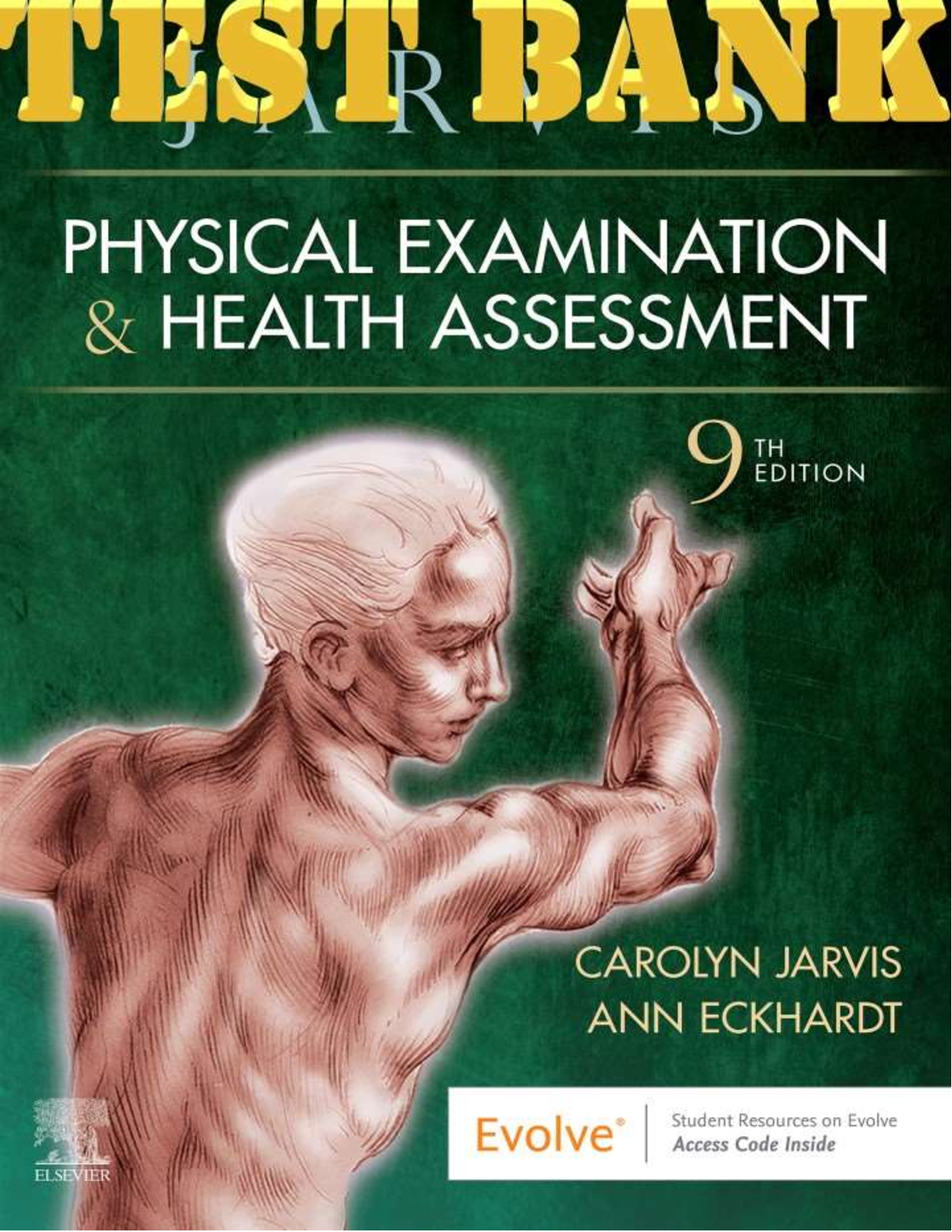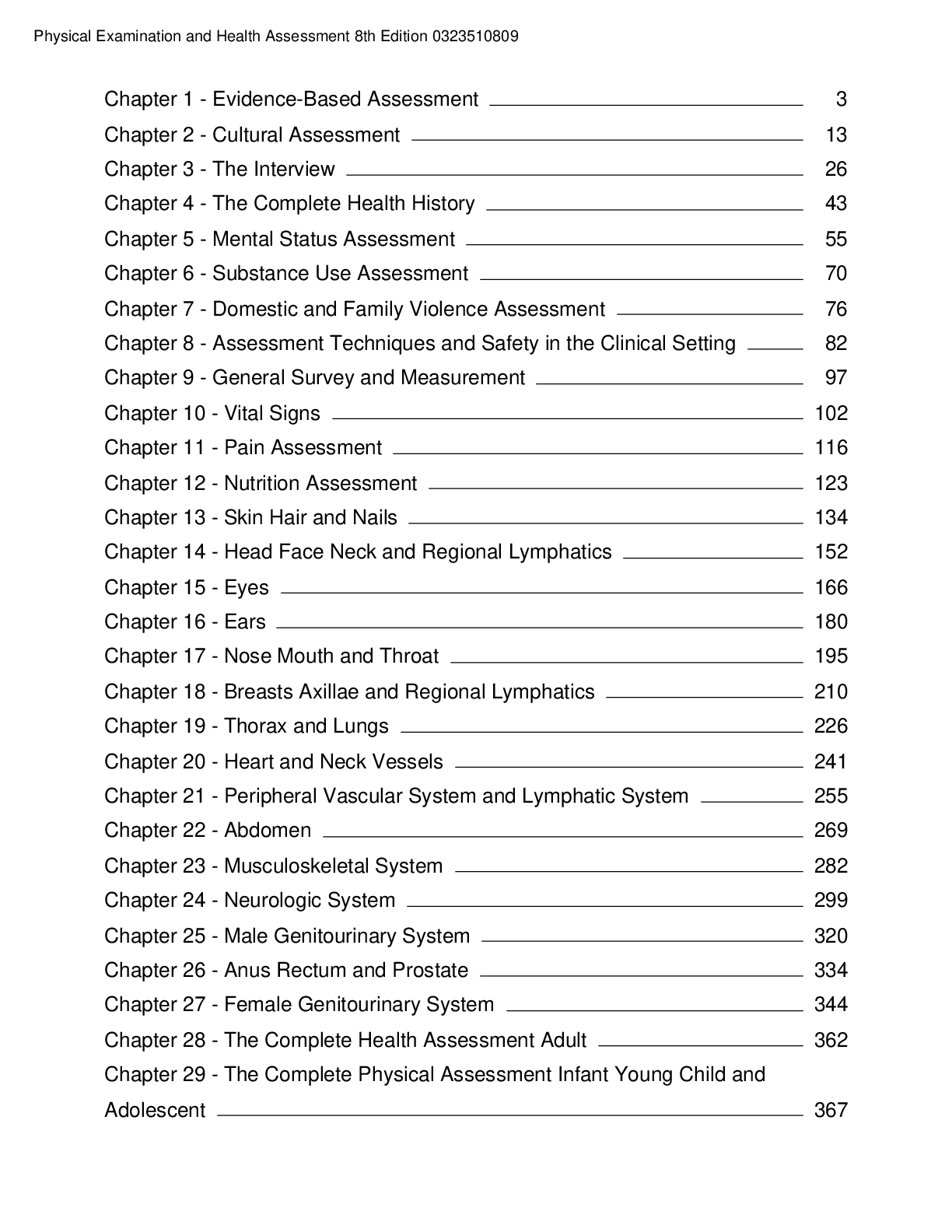*NURSING > TEST BANK > PHYSICAL EXAMINATION AND HEALTH ASSESSMENT TESTBANK BY JARVIS:Chapter 22: Abdomen (All)
PHYSICAL EXAMINATION AND HEALTH ASSESSMENT TESTBANK BY JARVIS:Chapter 22: Abdomen
Document Content and Description Below
MULTIPLE CHOICE 1. The nurse is percussing the seventh right intercostal space at the midclavicular line over the liver. Which sound should the nurse expect to hear? a. Dullness b... . Tympany c. Resonance d. Hyperresonance ANS: A The liver is located in the right upper quadrant and would elicit a dull percussion note. DIF: Cognitive Level: Understanding (Comprehension) REF: p. 550 MSC: Client Needs: Safe and Effective Care Environment: Management of Care 2. Which structure is located in the left lower quadrant of the abdomen? a. Liver b. Duodenum c. Gallbladder d. Sigmoid colon ANS: D The sigmoid colon is located in the left lower quadrant of the abdomen. DIF: Cognitive Level: Remembering (Knowledge) REF: p. 540 b. Dysphasia. c. Dysphagia. d. Anorexia. ANS: C Dysphagia is a condition that occurs with disorders of the throat or esophagus and results in difficulty swallowing. Aphasia and dysphasia are speech disorders. Anorexia is a loss of appetite. DIF: Cognitive Level: Applying (Application) REF: p. 542 MSC: Client Needs: Safe and Effective Care Environment: Management of Care 4. The nurse suspects that a patient has a distended bladder. How should the nurse assess for this condition? a. Percuss and palpate in the lumbar region. b. Inspect and palpate in the epigastric region. c. Auscultate and percuss in the inguinal region. d. Percuss and palpate the midline area above the suprapubic bone. ANS: D Dull percussion sounds would be elicited over a distended bladder, and the hypogastric area would seem firm to palpation. DIF: Cognitive Level: Applying (Application) REF: p. 540 MSC: Client Needs: Safe and Effective Care Environment: Management of Care 5. The nurse is aware that one change that may occur in the gastrointestinal system of an aging adult is: a. Increased salivation. b. Increased liver size. c. Increased esophageal emptying. d. Decreased gastric acid secretion. ANS: D Gastric acid secretion decreases with aging. As one ages, salivation decreases, esophageal emptying is delayed, and liver size decreases. DIF: Cognitive Level: Understanding (Comprehension) REF: p. 541 MSC: Client Needs: Health Promotion and Maintenance 6. A 22-year-old man comes to the clinic for an examination after falling off his motorcycle and landing on his left side on the handle bars. The nurse suspects that he may have injured his spleen. Which of these statements is trueregarding assessment of the spleen in this situation? a. The spleen can be enlarged as a result of trauma. b. The spleen is normally felt on routine palpation. If an enlarged spleen is noted, then the nurse should thoroughly palpate to determine its c. size. d. An enlarged spleen should not be palpated because it can easily rupture. ANS: D If an enlarged spleen is felt, then the nurse should refer the person and should not continue to palpate it. An enlarged spleen is friable and can easily rupture with overpalpation. DIF: Cognitive Level: Applying (Application) REF: p. 558 MSC: Client Needs: Physiologic Integrity: Physiologic Adaptation 7. A patient’s abdomen is bulging and stretched in appearance. The nurse should describe this finding as: a. Obese. b. Herniated. c. Scaphoid. d. Protuberant. ANS: D A protuberant abdomen is rounded, bulging, and stretched (see Figure 21-7). A scaphoid abdomen caves inward. DIF: Cognitive Level: Remembering (Knowledge) REF: p. 546 MSC: Client Needs: Physiologic Integrity: Physiologic Adaptation 8. The nurse is describing a scaphoid abdomen. To the horizontal plane, a scaphoid contour of the abdomen depicts a profile. a. Flat b. Convex c. Bulging d. Concave ANS: D Contour describes the profile of the abdomen from the rib margin to the pubic bone; a scaphoid contour is one that is concave from a horizontal plane (see Figure 21-7). DIF: Cognitive Level: Understanding (Comprehension) REF: p. 546 MSC: Client Needs: Physiologic Integrity: Physiologic Adaptation 9. While examining a patient, the nurse observes abdominal pulsations between the xiphoid process and umbilicus. The nurse would suspect that these are: a. Pulsations of the renal arteries. b. Pulsations of the inferior vena cava. c. Normal abdominal aortic pulsations. d. Increased peristalsis from a bowel obstruction. ANS: C Normally, the pulsations from the aorta are observed beneath the skin in the epigastric area, particularly in thin persons who have good muscle wall relaxation. DIF: Cognitive Level: Applying (Application) REF: p. 549 MSC: Client Needs: Safe and Effective Care Environment: Management of Care 10. A patient has hypoactive bowel sounds. The nurse knows that a potential cause of hypoactive bowel sounds is: [Show More]
Last updated: 1 year ago
Preview 1 out of 19 pages
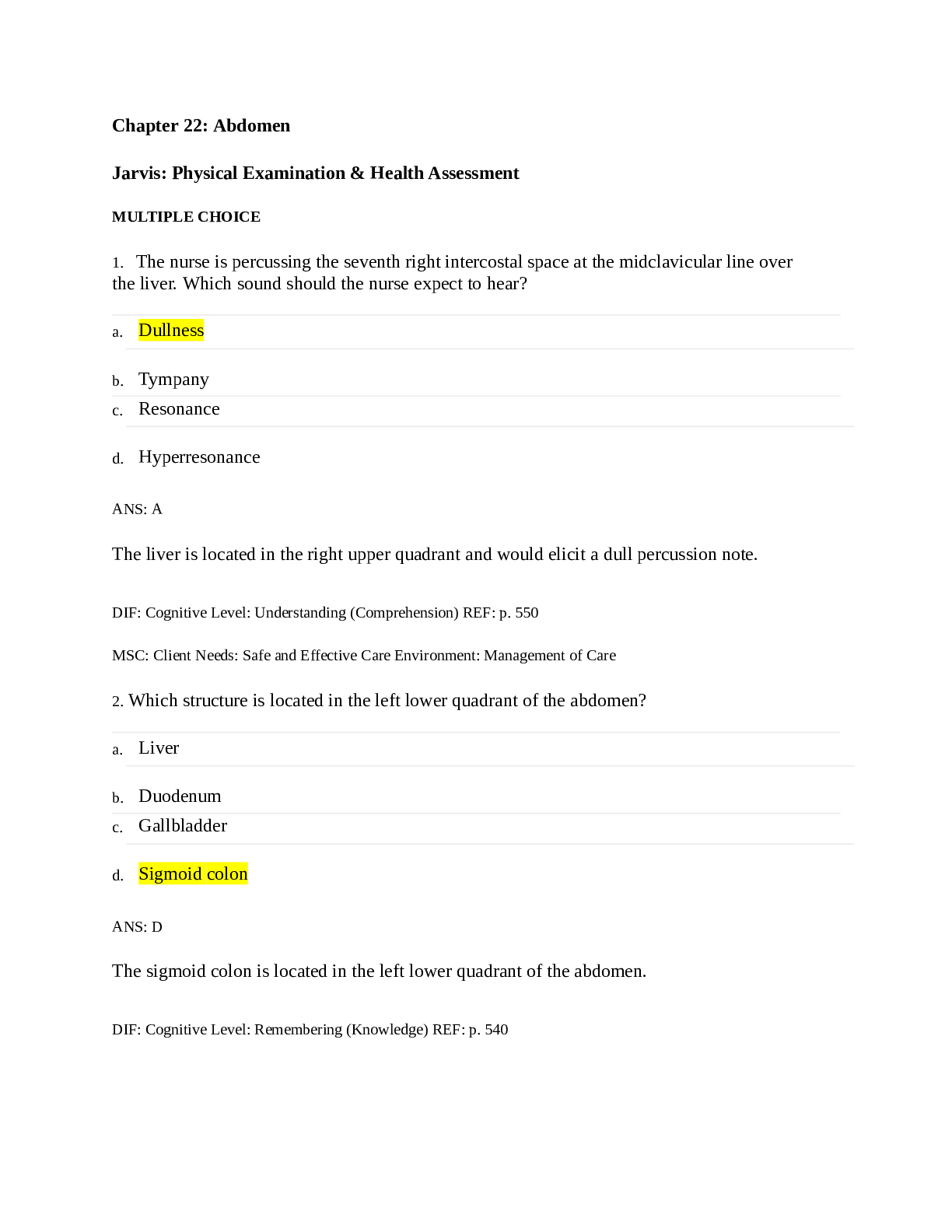
Buy this document to get the full access instantly
Instant Download Access after purchase
Add to cartInstant download
We Accept:

Reviews( 0 )
$10.00
Document information
Connected school, study & course
About the document
Uploaded On
Jul 02, 2021
Number of pages
19
Written in
Additional information
This document has been written for:
Uploaded
Jul 02, 2021
Downloads
0
Views
45

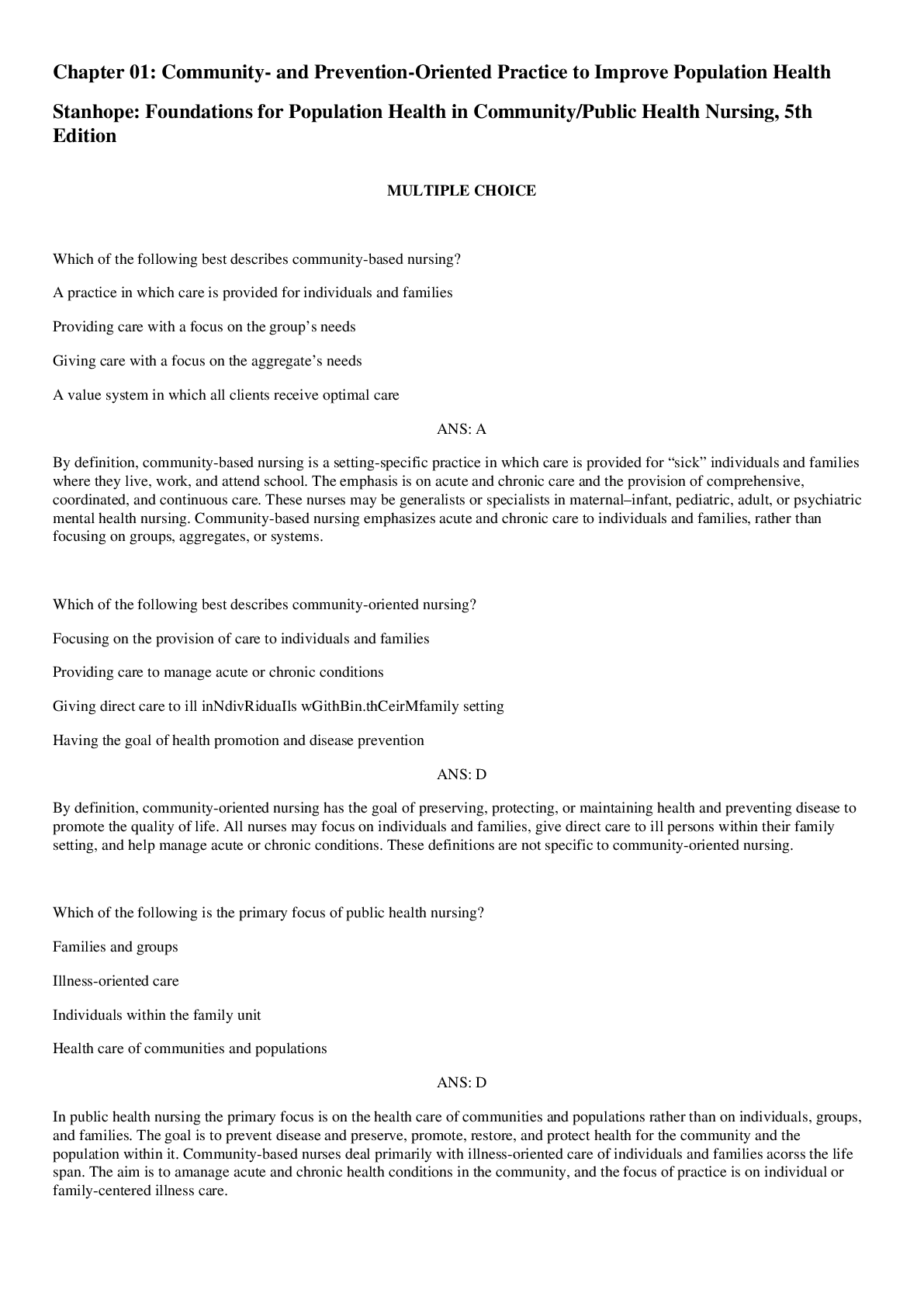



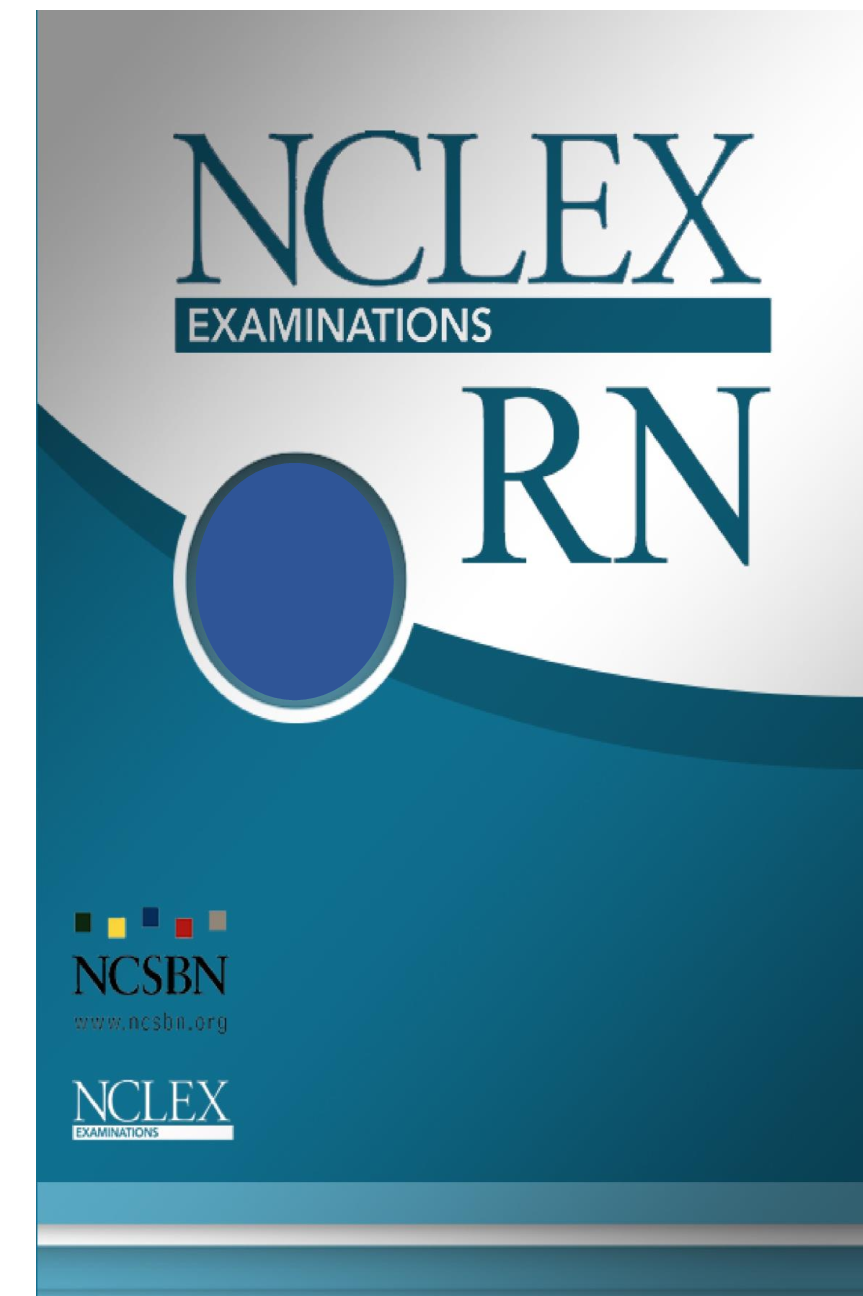

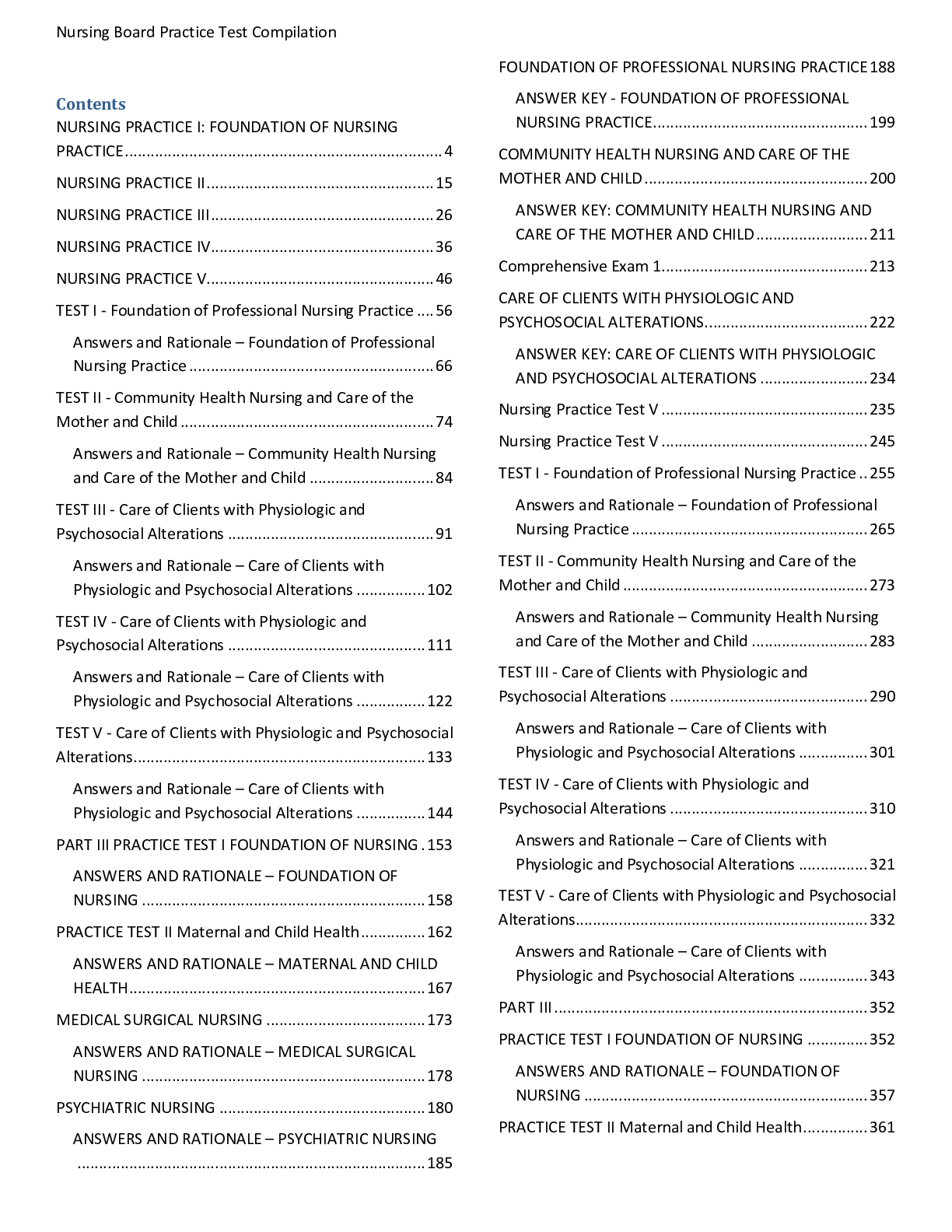

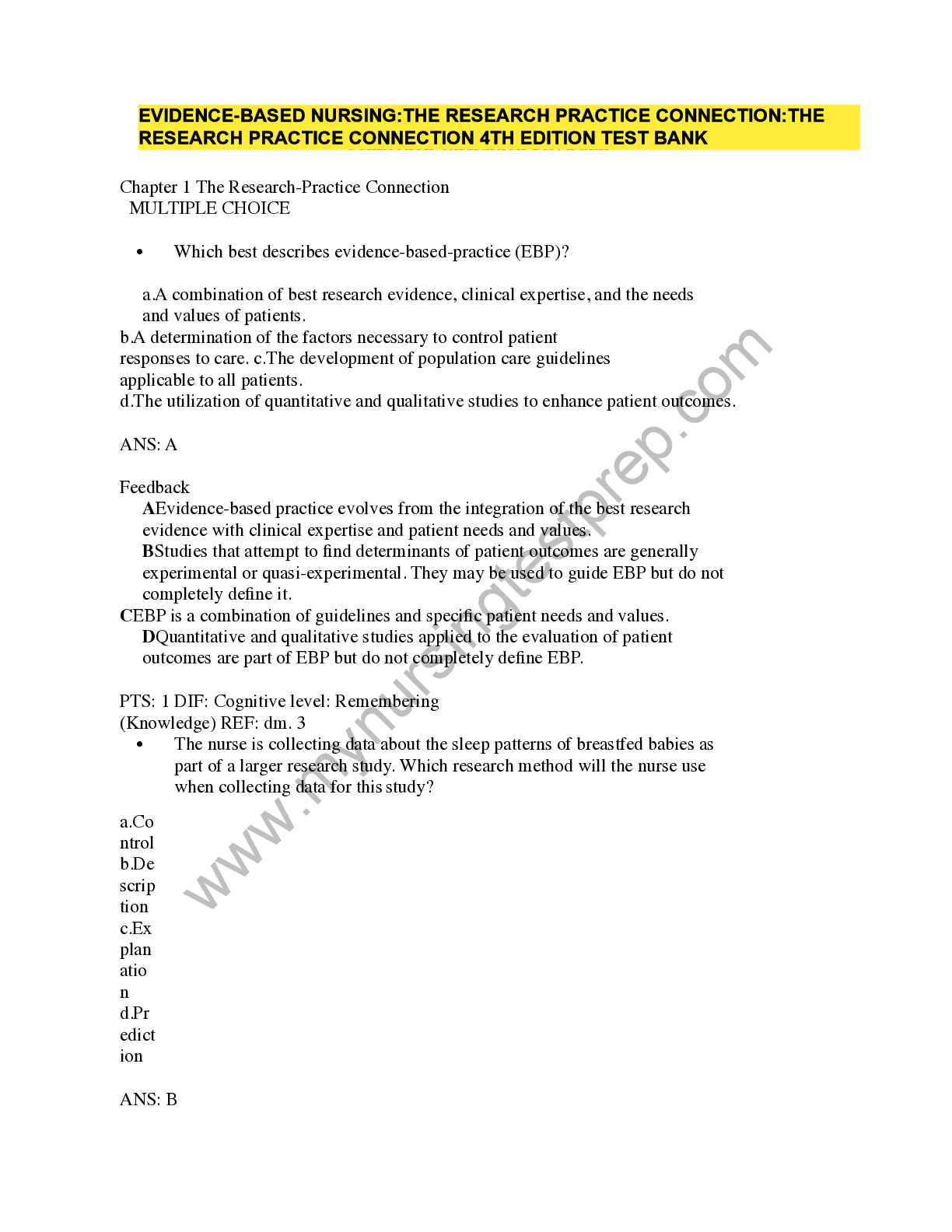
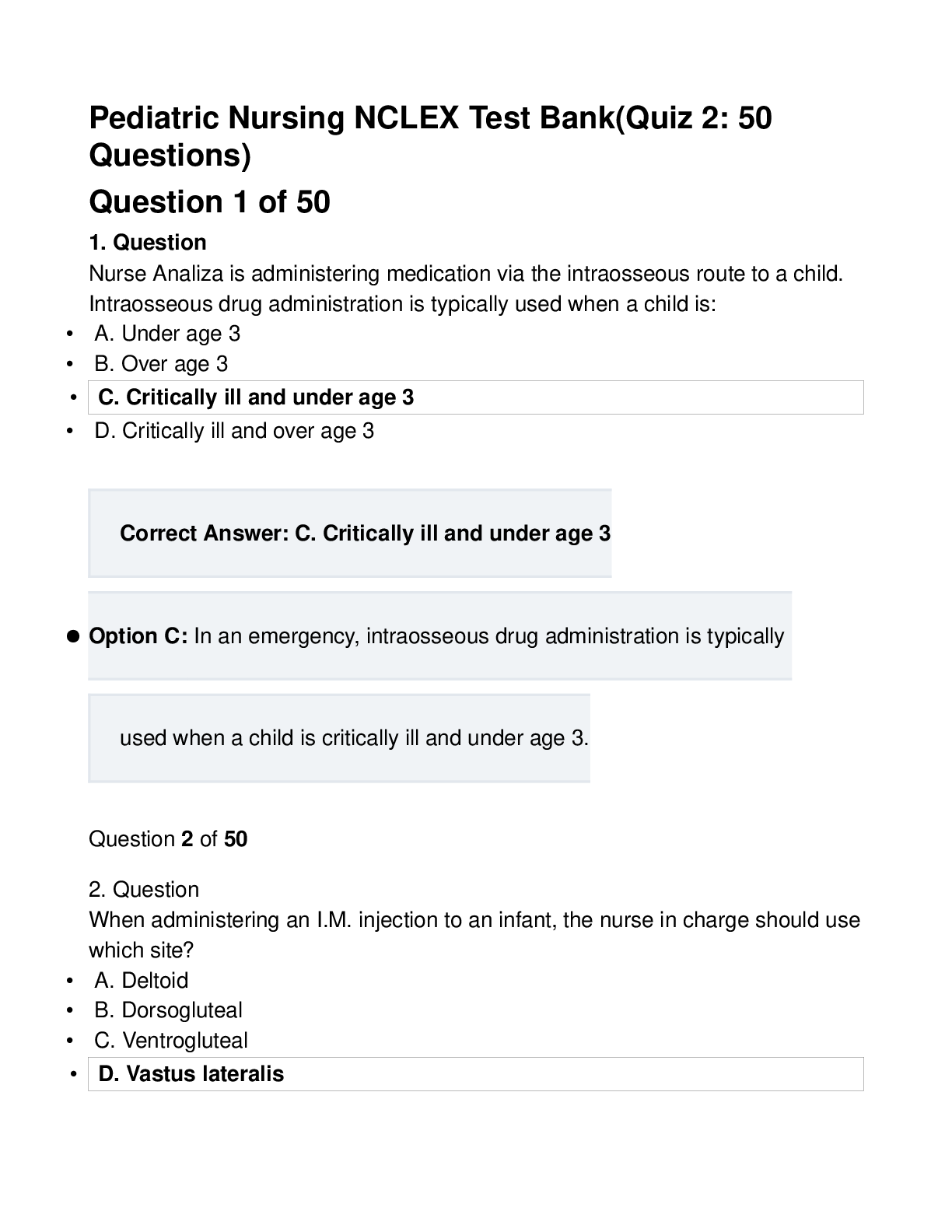
.png)

